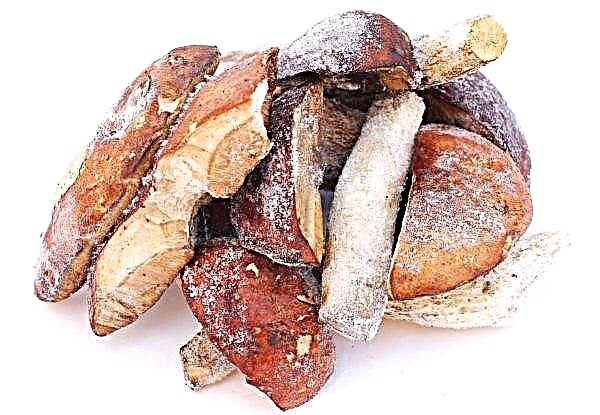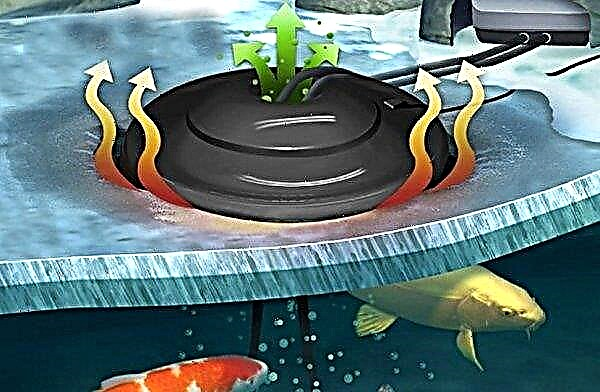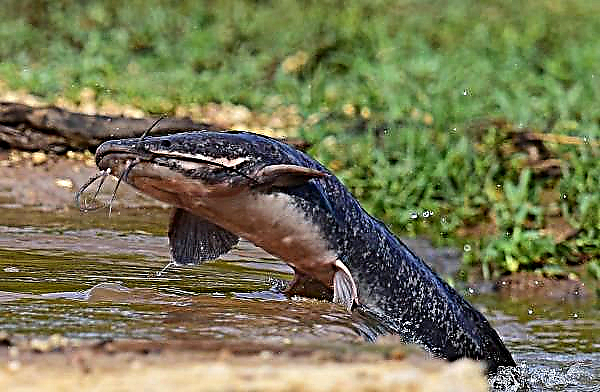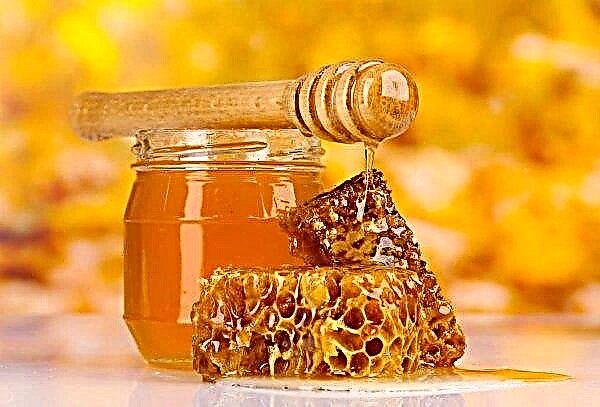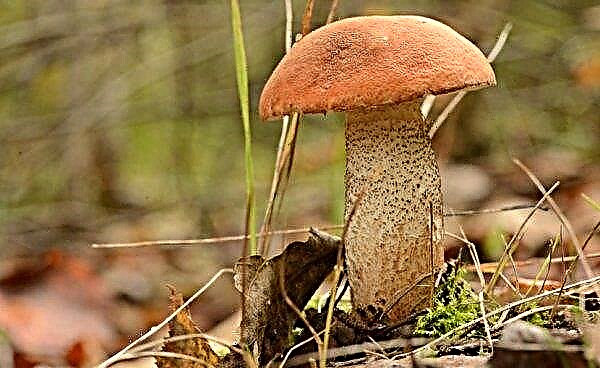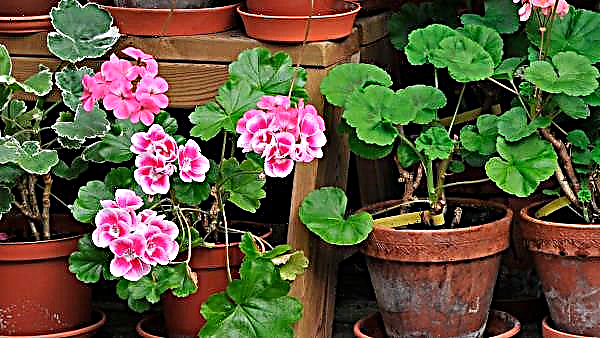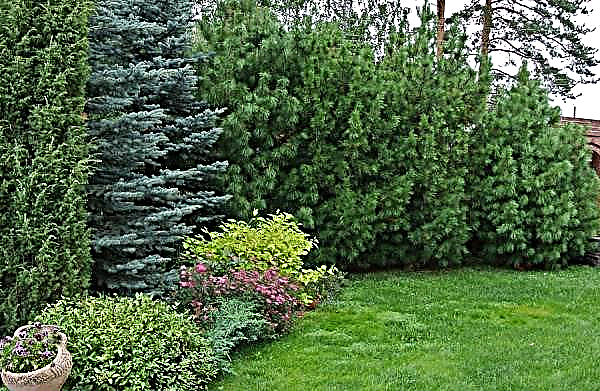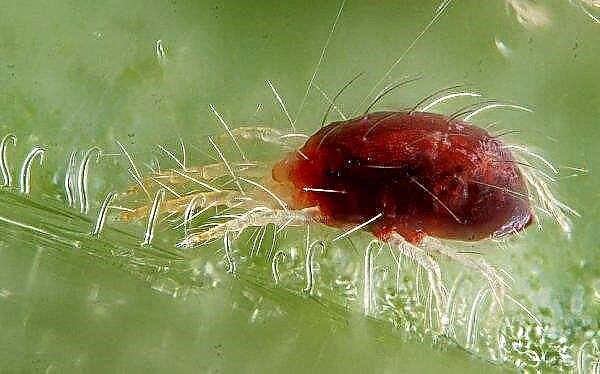One of the most beautiful ornamental representatives of the Cypress family is Juniperus chinensis Kuriwao Gold. The Chinese bush under consideration is increasingly found in Russia, despite the fact that Asian countries can be considered its homeland. This coniferous plant has its own characteristic external features, as well as specific features in planting and agricultural technology.
Botanical Description
The variety under consideration is presented as a powerful form of evergreen ornamental coniferous shrub.
Curivao Gold has the following botanical description:
- Bush. In the natural environment, the plant is considered tall. The growth of an adult shrub reaches an average of 2-3 m. The plant is quite fluffy, its girth is almost equal to the height of juniper.
- Crown. The branched part of the bush is asymmetric and openwork. The crown is more like the shape of a fountain, the branches are directed upward. The shoots of Curivao Gold are wide, sprawling and rather massive. Branches are covered with brown, peeling bark.
- Needles. In young shoots - golden, over time, it changes its color to bright green. All needles are scaly, and in the depths of the crown it is characterized by a small grayish blotch of color.
- Fruit. In the ripened state, they have a dark blue color. On top of the fetus you can see a dark gray coating.
Landing
In order for the juniper to grow well and delight with its decorativeness, it is necessary to take a very responsible attitude to the planting procedure.
It includes such stages:
- preparation of planting material;
- seat selection;
- directly landing.
Each step is carried out according to specific instructions that are suitable for this particular juniper variety.
Seedling preparation
When buying planting material, you must first assess its condition. A healthy Kurivao Gold seedling should not have suspicious fungal deposits, as well as mold traces on the bark or root system. The needles on the shoots should not be overdried or crumble. The roots of the plant must be holistic, elastic and without damage.

For a plant, a favorable measure is the soaking of the roots in "Kornevin" or "Heteroauxin" diluted in water. This procedure provides a good development of the underground organ of the bush. In order to stimulate the growth of juniper, its needles are sprayed with a special substance, for example, Energen.
Important! It is recommended to choose planting material with an earthen lump. Such a bush will take root well and will grow quite quickly, densely covered with needles.
Site selection and preparation
For this variety, the best option would be a well-lit place. Penumbra or darkened terrain is an unfavorable condition for the decorativeness of Chinese juniper, because its decorative properties will be lost - all the needles will quickly turn green without any golden color blotches. The soil is recommended to choose loamy or sandy loam, having a slightly acidic or neutral reaction.

The diameter of the planting pit should exceed the earthen seedlings by 2–3 times, and its depth should be about 70–75 cm. It is desirable to cover the bottom with a drainage mixture of sand and broken brick (20-22 cm layer). An excellent mix of soil for the considered juniper variety is considered to be a mixture of well-mixed three components: turf, sand and peat (1: 1: 2).
Important! When group planting, it is necessary to maintain a distance between the bushes of at least 150 cm.
Landing process
This stage needs to be given the maximum amount of time and attention. The juniper planting algorithm is carried out in six steps:
- Filling the landing pit with soil mixture.
- Release of planting material from the container.
- Installation of a seedling in an upright position in the central part of the pit.
- Falling asleep with dense plant pressing (without deepening the root neck).
- Tamping the earth, the formation of a circular funnel.
- Abundant watering (1-2 buckets of warm water) around the seedling.

Juniper Care
Despite the fact that this variety is notable for its unpretentiousness in agricultural technology, to obtain the maximum decorative effect, it is necessary to adhere to the basic rules.
A gardener growing a Kuriwao Gold variety should take care of the following procedures:
- watering;
- top dressing;
- loosening and mulching;
- pruning
- preparation for winter;
- pest and disease control.
The above measures will provide a long decorative, healthy and long life plant.

Watering
After the planting process, the young bush is in great need of moisture, so within 7 days it must be abundantly watered. After that, the young plant is moistened with 1-3 buckets of water weekly. The main condition is to prevent the soil from drying out. Watering an adult juniper is necessary in the summer - 2-3 times a season. It is also recommended to spray needles, especially in hot weather. This procedure is usually carried out in the morning or after sunset to protect the plant from sunburn. During a drought, the watering of the Golden Curivao variety increases.
Top dressing
Juniper, as a representative of coniferous plants, has some feeding characteristics. Among these features can be distinguished:
- the bush does not survive excess nitrogen in the soil;
- there must be a mandatory presence of magnesium in top dressing to normalize photosynthesis.
Excellent fertilizers for it can be called nitroammofosku or Kemiru Universal, also special complex fertilizers for conifers are considered acceptable options. Top dressing is carried out in the second year after planting juniper.
 The plant is usually fed once a year, in late April or early May.
The plant is usually fed once a year, in late April or early May.
Loosening and mulching
To provide the soil and root system of the bush with oxygen, the gardener needs to cultivate the land. To do this, loosen the trunk circle of the juniper shallow so as not to damage the root system. A prerequisite is the lack of growth of weed and lawn grass around the plant at a distance of 0.7 m. Mulching is carried out immediately after planting juniper. To do this, you need to make a 5-centimeter layer of mulch from peat, pine bark and wood chips.
Did you know? In the time of Ancient Russia, the bark of this bush was a popular material for creating cups and plates. On hot days, the liquid in such a dish did not heat up for a long time, and the milk did not turn sour.
Pruning
Shaping and pruning Juniper Curivao Gold is carried out to achieve certain goals.
Among these tasks can be identified:
- maintaining decorativeness;
- lighting control;
- ensuring healthy growth.
The formation of the crown is carried out according to the idea of the gardener. The bush lends itself perfectly to a haircut, after which it receives a certain splendor. Primary pruning is performed in early spring, and secondary pruning in August. It is not recommended to trim more than a third of the total number of last year’s growth. Mowing the bush should be neat, as restoration of the bush can be considered rather slow. The main goal is to cut dry, damaged and deformed branches. The formation of juniper as a hedge is carried out by cutting sticking shoots.

Winter preparations
It is believed that the Juniper Curivao Gold variety is characterized by high frost resistance, so only young specimens need to be covered. For wintering, it is necessary to sprinkle the near-stem zone with peat (layer of 10 cm). The young bush should be covered with spruce branches or special garden breathable material for wintering. So that under the pressure of snow the shoots of the plants are not damaged, in the autumn period it is necessary to wind the branches, pressing them to the trunk.
Despite the fact that wintering is especially necessary for plants of the first year of life, it should be noted that adult specimens also need preparation. If the bush is characterized by a spreading crown, then twine is required to tie the branches.

Possible diseases and pests
The elimination of various diseases and pests of juniper should be carried out on time. For preventive and therapeutic purposes, the plant must be treated with insecticides twice a year (in spring and summer). Among the popular funds can be called "Aktaru" and "Actellik." When the juniper is affected by various diseases, it is recommended to use fungicides, which include copper. The variety in question should not be placed near fruit trees such as an apple tree or a pear, as the bush may become rusty from them.
With an excess of moisture, the bush is often affected by a fungus, which is almost impossible to eliminate on young specimens. In such cases, it is recommended to dig up and dispose of the infected juniper to prevent infection of other plants. The brown color of the needles is a sign of damage to alternariosis, the occurrence of which can be caused by the lack of normalization of air circulation between plants. Damaged shoots must be disposed of and the plant sprayed with “Topaz”.

The most common insects that infect the considered juniper variety are:
- moth;
- gall midge;
- snails;
- juniper rodents and scale insects;
- ants.
To eliminate them, the crown and soil must be treated with insecticides, for example, “Fufanon” or “Actellik”.
Did you know? According to some reports, juniper has been growing on our planet for more than 50 million years. For the first time, this plant was used in folk medicine by the ancient Egyptians.
Breeding methods
Kuriwao Gold has several methods of reproduction, so you do not have to worry about the issue of increasing the number of copies of this species in your area.
This plant propagates in three ways:
- cuttings;
- layering;
- seeds.
The first method is considered the most common. It provides the receipt of several seedlings at once for a small time period. Shoots 100–200 mm long (with two or more internodes) must be separated from the shrub so that a part of the mother trunk covered with bark is left on them. This method is recommended in the last winter month.

The lower part of the shoot should be cleaned of needles and immersed in a tool for root growth ("Kornevin"). Planting containers should be saturated with humus, sand and peat. Cuttings are placed in the soil by 3 cm, a film is stretched over the container and placed in a well-lit place. After that, constant watering and spraying (if necessary) are carried out. After the cuttings are rooted, the film can be removed, and next year it is already possible to transplant seedlings to a permanent place.

The second method involves the following actions:
- Loosening of soil around an adult juniper.
- The introduction of humus into the ground with peat and sand.
- Cleaning the side branch of needles and bark with its bending to the ground.
- Perform regular watering.
- Separate layering from the main bush for the next year.
- Transplantation into open ground since the advent of new shoots.
The third method of reproduction is rarely practiced due to the long and laborious process.
Use in landscape design
Juniper Kuriwao Gold, due to its good characteristics, unpretentiousness and attractive appearance, is very popular in landscape design. Due to the fact that the plant is considered evergreen, it looks great at any time of the year. The variety under consideration can be used both in single plantings and in group ones. The most popular are Kuriwao Gold compositions with other coniferous and deciduous shrubs that have similar dimensions.

Often this variety is found to create a hedge in the design of gardens. Many decorative forms of Chinese juniper are distinguished by decorative color shades of needles on young shoots: cream, golden yellow, bluish-green, so this variety will look very nice next to Expansa Variegat, Old Gold, Pfitzeriana and Stricta.
Thus, the Juniper Curivao Gold variety is an unpretentious evergreen representative of the Cypress family. The combination of golden and green needles, as well as the ability to give the crown different shapes, attract landscape designers to create a wide variety of compositions.

